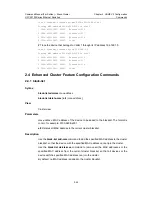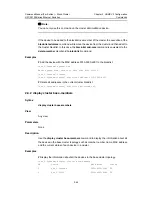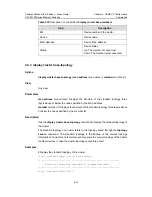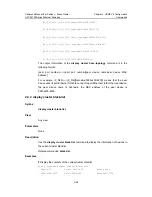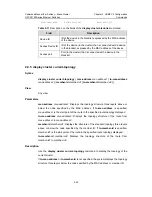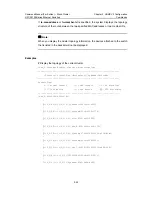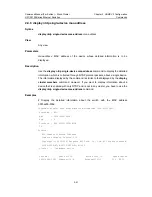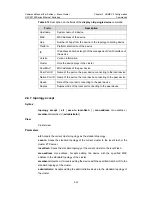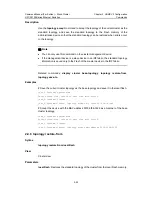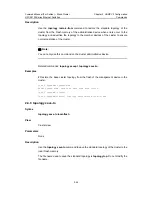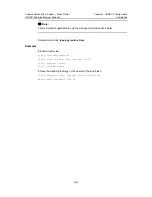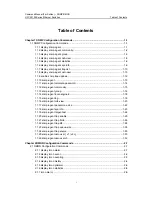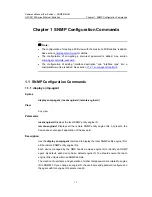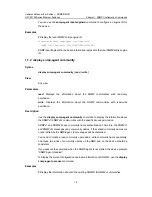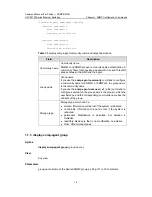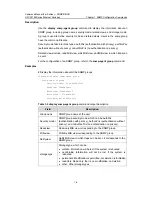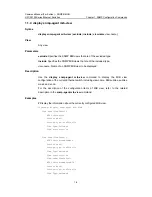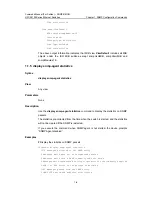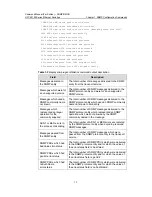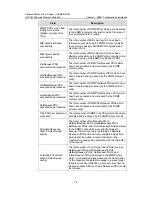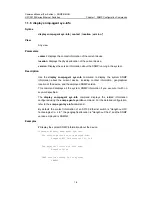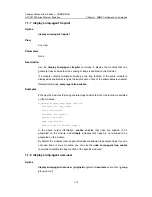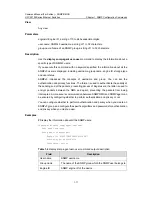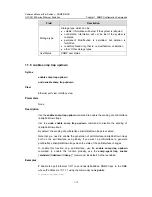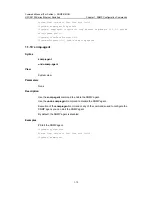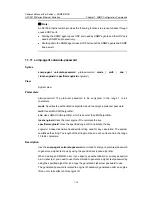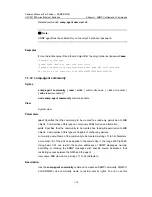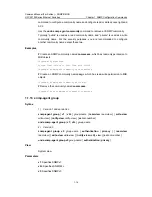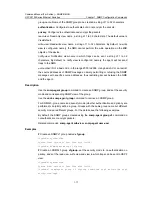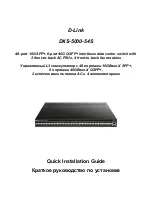
Command Manual (For Soliton) – SNMP-RMON
H3C S3100 Series Ethernet Switches
Chapter 1 SNMP Configuration Commands
1-2
You can use the
snmp-agent local
-
engineid
command to configure an engine ID for
the device.
Examples
# Display the local SNMP entity engine ID.
<Sysname> display snmp-agent local-engineid
SNMP local EngineID: 800007DB000FE20F12346877
SNMP local EngineID in the above information represents the local SNMP entity engine
ID.
1.1.2 display snmp-agent community
Syntax
display snmp-agent community
[
read
|
write
]
View
Any view
Parameters
read
: Displays the information about the SNMP communities with read-only
permission.
write
: Displays the information about the SNMP communities with read-write
permission.
Description
Use the
display snmp-agent community
command to display the information about
the SNMPv1/SNMPv2c communities with the specific access permission.
SNMPv1 and SNMPv2c use community name authentication. Therefore, the SNMPv1
and SNMPv2c messages carry community names; if the carried community names are
not permitted by the NMS/agent, the messages will be discarded.
You need to create a read community name and a write community name separately,
and these two kinds of community names on the NMS and on the device should be
consistent.
If you execute the command when the SNMP agent is not started, the device prompts
“SNMP Agent disabled”.
To display the current configuration username information of SNMPv3, use the
display
snmp-agent usm-user
command.
Examples
# Display the information about all the existing SNMPv1/SNMPv2c communities.

